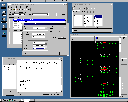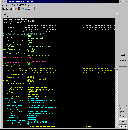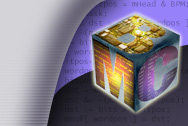Protocol-tester platform for Moesarc Technology
During a period of six month, starting when MBC was founded in November 2000, MBC was engaged full-time as a software consultant for Moesarc Technology in their design and implementation efforts to make their next generation protocol-tester application platform.
The application platform is a new hardware and software platform for upcoming protocol testing applications initially targeted at the GSM, GPRS and UMTS networks. The platform is based upon a new and very powerful interface card, designed in-house at Moesarc Technology. The interface card is built around a 200 MHz RISC processor, PCI bus-interface, and comprises four bi-directional E1/T1 ports and two bi-directional 155.52 Mbps optical ATM ports. The whole system will consist of one or more interface cards installed in a powerful desktop or portable PC, which is running the application software and a real-time operating system. The application software is designed to efficiently utilise additional processing power of a SMP (multiprocessor) system to give a cost effective upgrade path.
One of the main requirements in the project was to bring true real-time performance to the script driven protocol simulation engine, which, for example, would allow full simulation of the time-critical Abis interface in GSM.
The primary tasks for MBC in this project was to design and implement the main application software structure which consisted of; the GUI, the basic protocol-stacks, simulation engine, online protocol monitoring, offline protocol analysis, etc.
Below are two screenshots of the application during development. The screenshot to the left shows some of the application windows. The screenshot to the right shows protocol decode on the A-interface in GSM. The decoder is a test-implementation of a complete protocol stack, a "proof of concept" implementation. The protocol layers shown are; HDLC, MTP2, MTP3, SCCP, BSSAP, DTAP, SM-CP, SM-RP, SM-TP and SMS-Text. The decode shows an SMS-DELIVER message being transferred from the SMS Service Centre to the Mobile Station.



